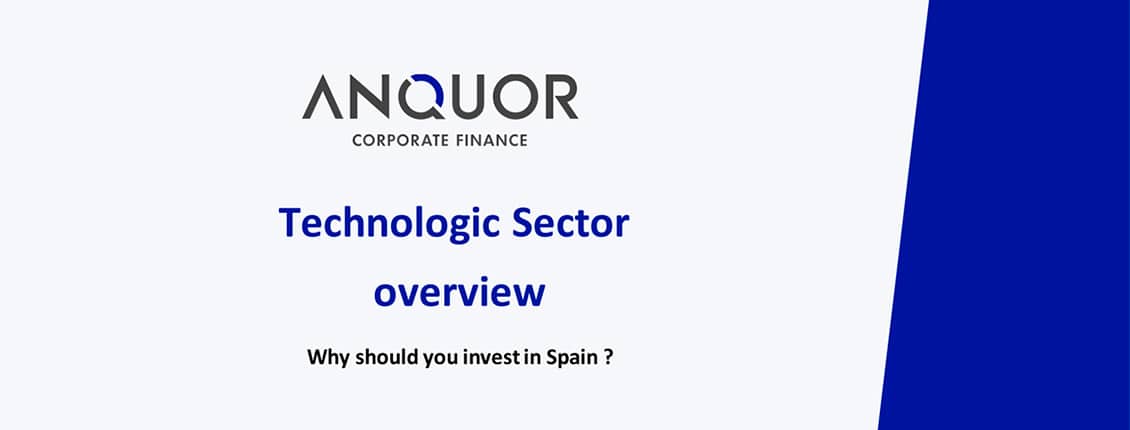Overview
COVID has brought about a heightened level of awareness of how important digital transformation is and how quickly it needs to happen
Comments
In 2021, the momentum has continued as a result of the need for digitization, which has increased the demand for cloud computing, cybersecurity, SaaS and IT services.
Business activity globally has seen a record year and has been driven primarily by technology companies Many sectors are digitizing their processes more and more, and this phenomenon pushes the evolution of all the verticals of the Technology industry.Some segments like cybersecurity, cloud computing, data science, and information technology have seen more activity than other sub-segments at the moment.According to PwC experts, the technology is spreading at breakneck speed across multiple industries. In the IT sector, record venture capital investments and IPOs are driving increased competition and consolidation opportunities, resulting in mergers and acquisitions reaching new highs in 2022.
M&A activity, venture capital and PE
In 2021, PE and VC were mainly driven by cross-border transactions. PE reached €36,799 million in total value added in 2021 (82% increase compared to 2020), while venture capital reached €8,916 million (7% increase compared to 2020)
Spain has experienced a strong increase in total value added and the number of transactions in PE and VC
• The main active PE players were KKR, Magnum Capital, Providence Equity partners, ProA Capital, GED Capital and Cinven.
• In 2021, the Technology subsector ranked first and experienced a year-on-year growth of 23%, reaching 324 transactions (264 transactions in 2020).
• The most active VC players were Inveready Capital, Wayra, Sabadell Venture Capital, InnvierteEconomía Sostenible and JME Venture Capital.
Mergers and acquisitions activity in Spain also evolved positively in 2021, breaking new records, especially in the technology segment
Why Spain?
Spain is a competitive economy that gives access to the global market
Spain is attractive to other countries for many reasons:
 4th economy in the EU and 14th in the world, with a GDP of 1.2 billion dollars. More than 14,600 foreign companies have established their business in Spain. It is the thirteenth country that receives the most foreign investment in the world. In addition, 70 of the top 100 companies in the Forbes Global 2000 operate in Spain.]
4th economy in the EU and 14th in the world, with a GDP of 1.2 billion dollars. More than 14,600 foreign companies have established their business in Spain. It is the thirteenth country that receives the most foreign investment in the world. In addition, 70 of the top 100 companies in the Forbes Global 2000 operate in Spain.] More than 750 million customers, the most important purchasing power in the world.
More than 750 million customers, the most important purchasing power in the world.
Spain enjoys unlimited access to the European market. Offers direct access to the LATAM region and its 660 million consumers.
Offers direct access to the LATAM region and its 660 million consumers.
High attractiveness for European companies looking to expand their business in the South and North American continent. €8.9 billion was invested in Spanish start-ups in 2021 (an increase of 6.7% compared to 2020)*. From 2019 to 2020, there was a 274% increase in the total value added of venture capital transactions.
€8.9 billion was invested in Spanish start-ups in 2021 (an increase of 6.7% compared to 2020)*. From 2019 to 2020, there was a 274% increase in the total value added of venture capital transactions.
DESI Index
Spain ranks 9th in the Digital Economy and Society Index (DESI) in 2021
In 2021, Spain ranked ninth (among 27 participants) in the DESI index below Luxembourg and above Austria. Over the years, the country has experienced strong development with respect to the four pillars evaluated by the European Commission: Human Capital, Connectivity, Integration of Digital Technology and Digital Public Services.• In 2021, a National Plan for Digital Skills was launched, which includes a comprehensive set of measures to strengthen digital skills among the workforce and citizens in general. At the moment, Spain has an average performance in the human capital dimension and this strategy will help the population.
• Spain launched in 2020 the Strategy for the promotion of 5G. This strategy aimed to improve the allocation and management of spectrum through pioneering rands and incentivize the deployment and use of 5G.
• Spain also launched the 2021-2025 SME Digitization Plan. The plan aims to boost disruptive innovation and entrepreneurship in Spain through the enhancement of digital skills, and has prioritized funding from the country’s Recovery and Resilience Plan (RRP) for that purpose with a robust set of actions. consistent support.
• RRP, with a total budget of €69,500 million, dedicates 28.2% of the total investment to digital (exceeding the target of 20.0%) with a total amount of €19,600 million. The plan has a particular focus on promoting the digitization of companies, in particular SMEs (25.0% of the total budget).
• The remaining investment of the plan will focus on enhancing the digital skills of the Spanish population (22.0%), improving digital connectivity (15.0%), continuing with the digitization of public administration (28.0%), and finally by supporting digital R&D and the deployment of digital technologies (10.0%).
DESI index and investment opportunities
Although it is natural to see an upward trend in the adoption of digitization, Spain is progressing faster than its European peers
Capabilities that have experienced the most improvement
• Across the many investment plans aimed at improving digital skills in all the dimensions analyzed by the DESI index, Spain has made relatively fast progress compared to the EU average.
• In fact, from 2015 to 2021, Spain has made the fourth largest increase in its DESI index (after Ireland, the Netherlands and Malta). Narrowing the gap with the leaders in digitization in Europe, the Nordic countries.
• Spain stands out mainly in two dimensions: connectivity and digital public services. Regarding the former, Spain is among the countries with the greatest deployment of
very high capacity networks covering 89% of households in 2019 (while the average in Europe was 44%).
• In contrast, the country lags behind in human capital. In fact, approximately 40% of the population still lack basic digital skills and approximately 8% have never used the Internet. However, the investment plan
Spain Digital 2025 aims to address this problem through investments in the education system.
What are the best investment opportunities?
Geographic focus
According to the Spanish Startup Ecosystem Observatory, Madrid and Barcelona account for 93% of the total volume of investment
Size of the Spanish ecosystem (nationality and by hubs) and most valuable Spanish technology companies
The outstanding Spanish companies are:
- Flywire based in Valencia and valued at 1.8 billion euros
- Glovo based in Barcelona and valued at 800 million euros
- Wallbox based in Barcelona and valued at 1.5 billion euros
- Letgo based in Barcelona and valued at 800 million euros
- Cabify based in Madrid and valued at 2.6 billion euros
- Job and Talent based in Madrid and valued at €2,000M
Venture capital investment by Spanish hubs






